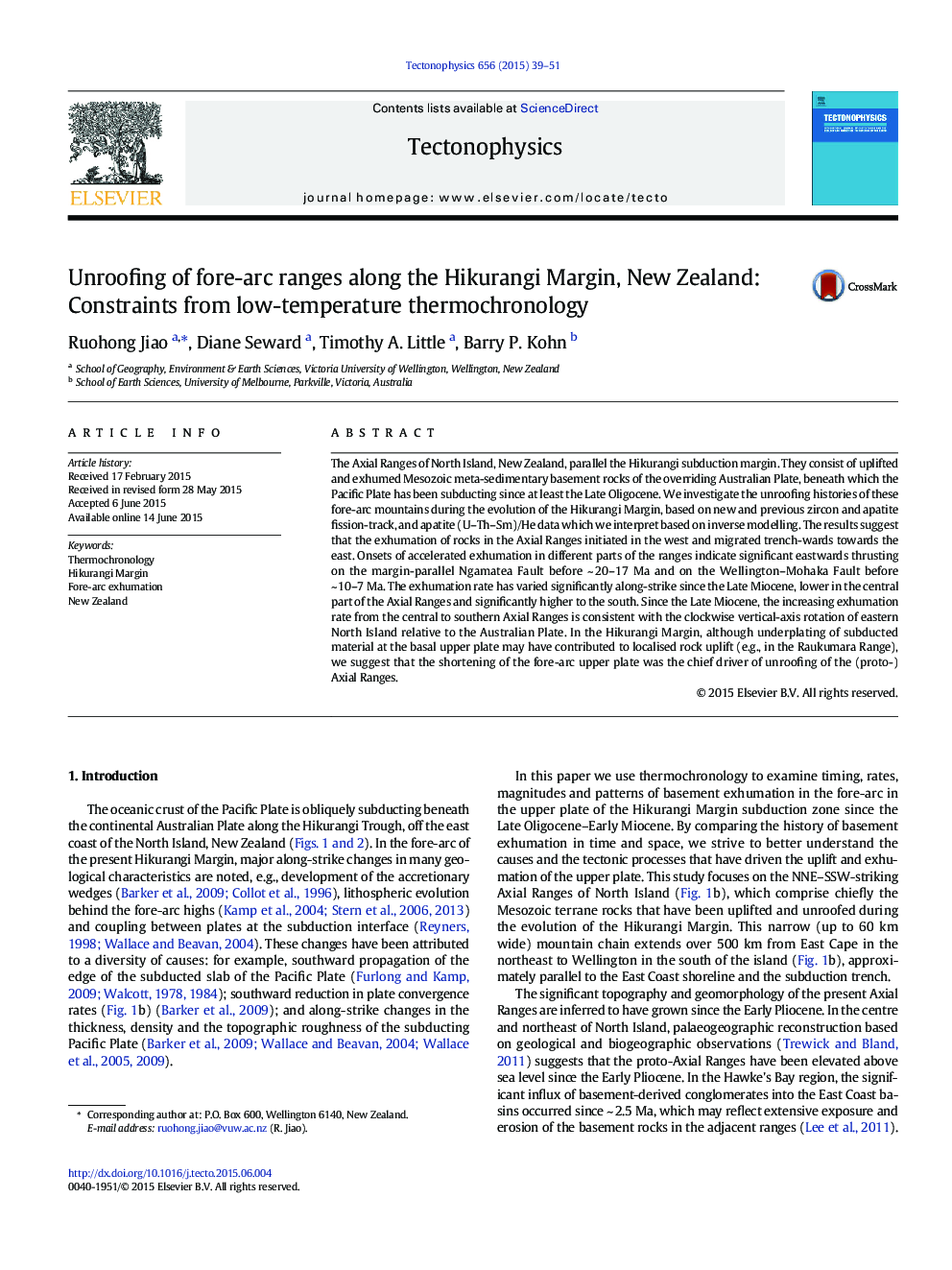| Article ID | Journal | Published Year | Pages | File Type |
|---|---|---|---|---|
| 4691600 | Tectonophysics | 2015 | 13 Pages |
•Rock exhumation migrates trench-wards in the fore-arc of Hikurangi Margin.•Exhumation rates vary significantly along strike during the last ~ 10–7 Ma.•Shortening in the hanging wall of subduction zone preferentially drives basement unroofing.
The Axial Ranges of North Island, New Zealand, parallel the Hikurangi subduction margin. They consist of uplifted and exhumed Mesozoic meta-sedimentary basement rocks of the overriding Australian Plate, beneath which the Pacific Plate has been subducting since at least the Late Oligocene. We investigate the unroofing histories of these fore-arc mountains during the evolution of the Hikurangi Margin, based on new and previous zircon and apatite fission-track, and apatite (U–Th–Sm)/He data which we interpret based on inverse modelling. The results suggest that the exhumation of rocks in the Axial Ranges initiated in the west and migrated trench-wards towards the east. Onsets of accelerated exhumation in different parts of the ranges indicate significant eastwards thrusting on the margin-parallel Ngamatea Fault before ~ 20–17 Ma and on the Wellington–Mohaka Fault before ~ 10–7 Ma. The exhumation rate has varied significantly along-strike since the Late Miocene, lower in the central part of the Axial Ranges and significantly higher to the south. Since the Late Miocene, the increasing exhumation rate from the central to southern Axial Ranges is consistent with the clockwise vertical-axis rotation of eastern North Island relative to the Australian Plate. In the Hikurangi Margin, although underplating of subducted material at the basal upper plate may have contributed to localised rock uplift (e.g., in the Raukumara Range), we suggest that the shortening of the fore-arc upper plate was the chief driver of unroofing of the (proto-) Axial Ranges.
